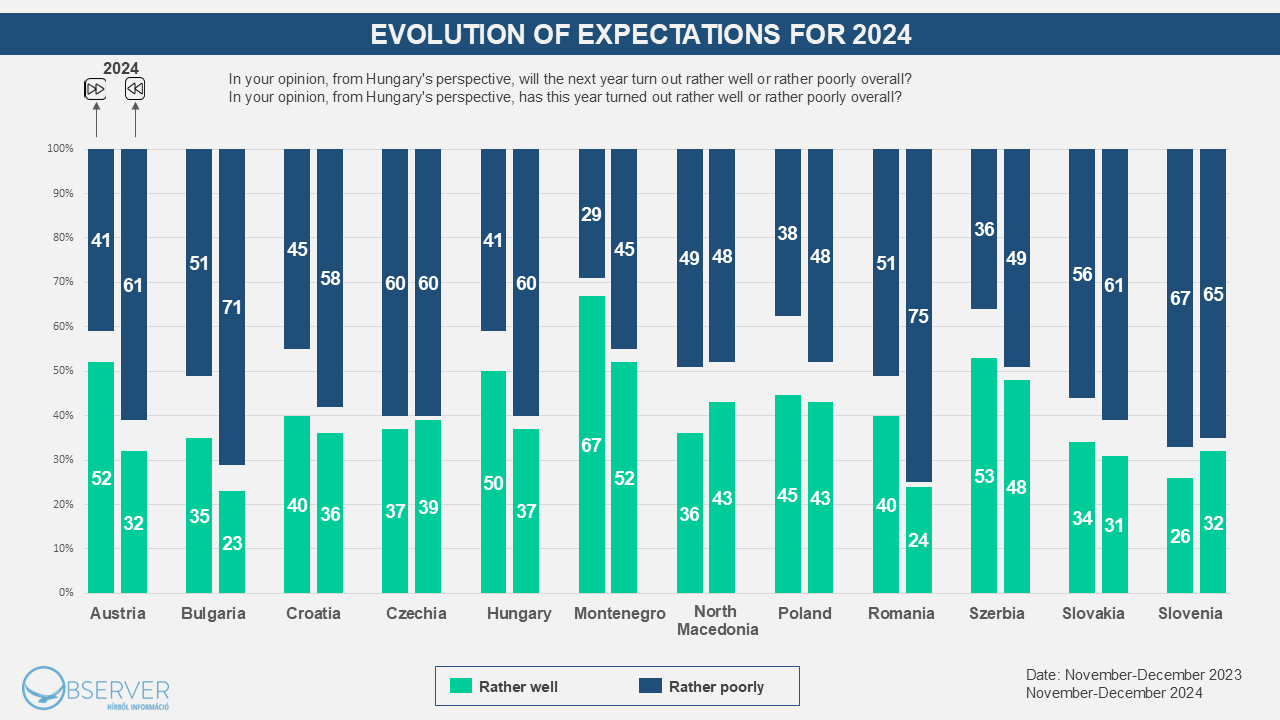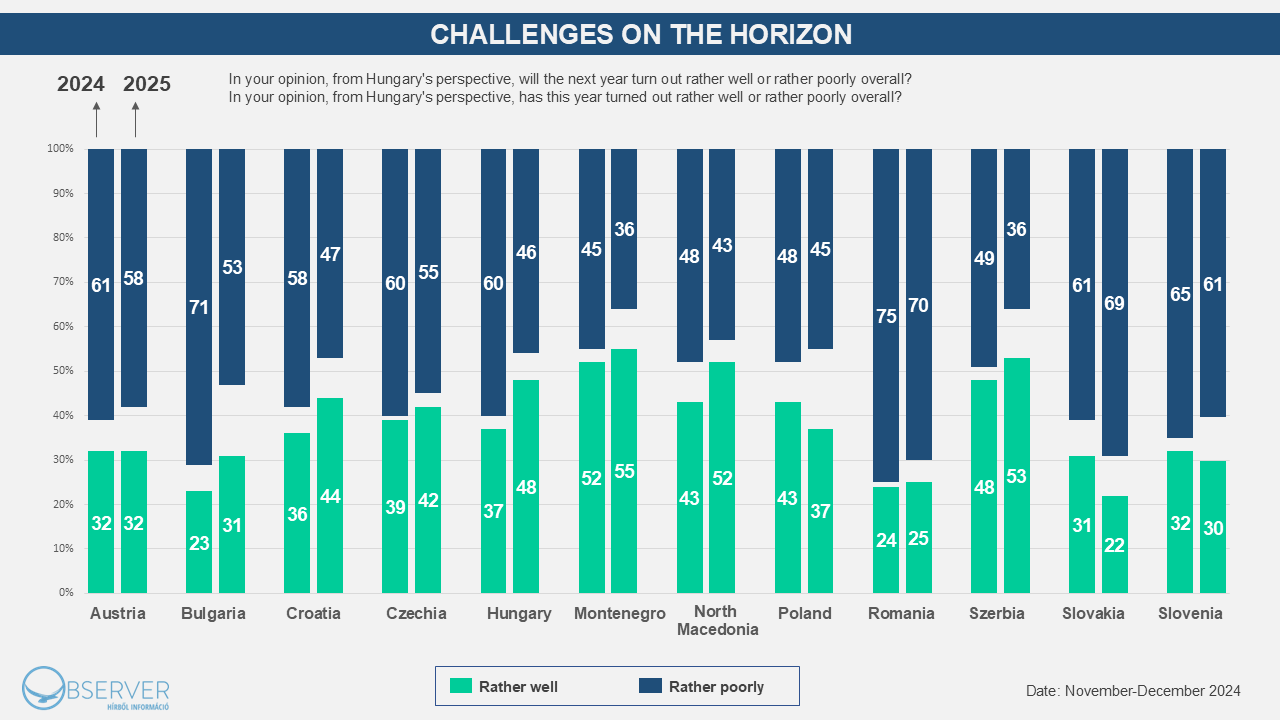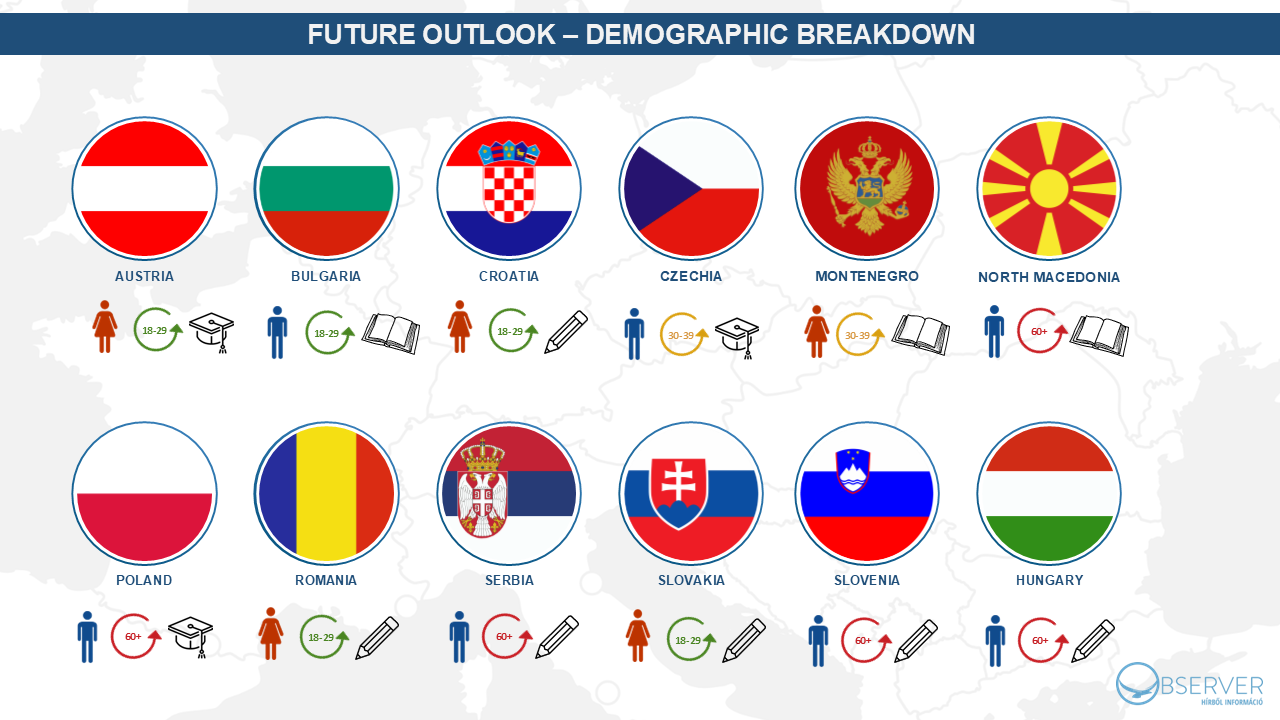As we step into the new year, we once again conducted our survey to understand how people in the region viewed 2024 and what they expect from 2025. A year ago, we entered the new year with cautious expectations—let’s see how our predictions turned out.
2024
It is certainly interesting to compare people's expectations at the end of 2023 with how they now reflect on the past year at the end of 2024. Based on this, the 12 surveyed countries can be grouped into three major categories. The first category includes countries where the gap between expectations and reality was the largest: Austria, Romania, Montenegro, Hungary, and Bulgaria. The second category consists of those whose expectations were mostly met, meaning their year unfolded as anticipated. This group includes Poland, Slovakia, Croatia, and Serbia. Finally, there are three countries where people felt that 2024 was better than they had expected. These countries—Czechia, Slovenia, and North Macedonia—exceeded their initial expectations. The differences between countries were influenced not only by cultural perspectives on the past and future but also by the responses of those who were unable or unwilling to answer the questions. In North Macedonia, 15% of respondents could not make a prediction about 2024 last year, whereas in the latest survey, only 9% were unable to assess the past year.

The proportion of people who chose not to answer questions about their country's future reflects a certain level of uncertainty in Central European nations. Ongoing war conflicts and economic difficulties further increase this uncertainty among people. However, despite the fact that 2024 did not unfold as expected in most countries, hope, optimism, and faith in the future remain strong in the survey results.
2025
Looking ahead to 2025, optimism has increased in 8 out of the 12 surveyed countries compared to 2024. The most pessimistic country is Slovakia, where only 22% of respondents believe that their country's situation will improve. The second-largest negative shift compared to last year can be observed in Poland—while 43% of respondents viewed 2024 positively, only 37% expect the upcoming year to be favorable for their country. Similarly, in Slovenia, people anticipate a worse year in 2025. In Bulgaria and Romania, respondents generally have a more pessimistic outlook on their country's future than those in most of the surveyed nations. However, there is still a degree of optimism, as more people expect 2025 to be better compared to last year. Meanwhile, in Croatia, Czechia, Serbia, and North Macedonia, expectations for 2025 are even more positive than the already anticipated improvements in 2024. Not surprisingly, in all four of these countries, a high proportion of people expect the new year to be a good one. The most optimistic outlooks for 2025 are seen in Montenegro (55%), Serbia (53%), North Macedonia (52%), and Hungary (48%). In Hungary, in particular, people anticipate a significant improvement compared to the previous year.

It is an interesting approach to examine opinions and expectations about the future across generations. In Poland, North Macedonia, Montenegro, and Croatia, young people and older generations are nearly equally optimistic about 2025. However, in Hungary, Slovenia, and Serbia, young people tend to have a more pessimistic outlook on the future in this regard. In the other surveyed countries, young people have a more positive view of the upcoming year. One possible reason for this is that younger generations may feel the impact of global issues—such as climate change, economic inequalities, or political instability—more intensely. These problems pose long-term threats that may directly affect younger age groups. At the same time, older individuals are often in a more stable life situation and, due to their greater life experience, are better equipped to assess future challenges, having encountered similar situations before. Understanding these differences and interpreting confidence in the future can contribute to improving social cohesion between generations.
Overall, men tend to be slightly more optimistic about the future, with responses from 7 out of 12 countries indicating a more positive outlook compared to women. In terms of education, we can observe that in most countries, individuals with lower levels of education are more optimistic than those with higher education. However, in Austria, the Czech Republic, and Poland, people with higher education levels tend to have a slightly more positive outlook for 2025. The following chart illustrates which groups in each country believe that 2025 will be a better year. Based on this, the two most optimistic groups in the region are men over 60 with lower education levels and women aged 18-29 with similarly lower education levels. In the case of the latter group, a potential distortion factor could be that many are still pursuing their studies, meaning their completed education level was lower at the time of data collection.

Methodology
The public opinion survey was conducted in 12 Central European countries: Austria, Bulgaria, Croatia, the Czech Republic, Hungary, Romania, Serbia, Slovakia, Slovenia, North Macedonia, Montenegro, and Poland. Data collection took place between November 20 and December 21, 2024. The survey was conducted primarily via telephone interviews, except in Serbia and Montenegro, where face-to-face interviews were used. Each country’s sample included 1,000 respondents and was representative in terms of gender, age, and settlement type.
